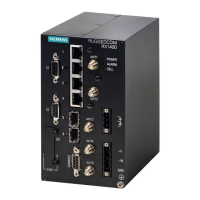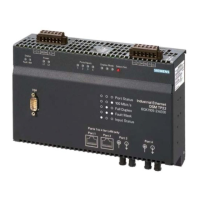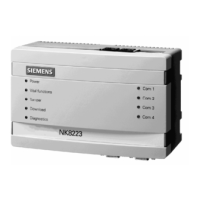Chapter 14
Network Redundancy
RUGGEDCOM ROX II
CLI User Guide
608 Deleting a VRRP Tracker
Parameter Description
weight { weight } Synopsis: A 32-bit signed integer between -254 and 254
The amount by which to increase or decrease the router's priority. When negative, the
priority decreases by this amount when the tracker falls. When positive, the priority
increases by this amount when the tracker rises. When not set, the state changes to the
fault state when the tracker falls.
rise { rise } Synopsis: A 32-bit unsigned integer between 1 and 65535
The number of successful tracker queries before changing the router priority.
fall { fall } Synopsis: A 32-bit unsigned integer between 1 and 65535
The number of unsuccessful tracker queries before changing the router priority.
4. Type commit and press Enter to save the changes, or type revert and press Enter to abort.
Section14.1.4.3
Deleting a VRRP Tracker
To delete a VRRP tracker, do the following:
1. Make sure the CLI is in Configuration mode.
2. Delete the tracker by typing:
no services vrrp trackers name
Where:
• name is the name of the VRRP tracker
3. Type commit and press Enter to save the changes, or type revert and press Enter to abort.
Section14.1.5
Managing VRRP Groups
Two or more VRRP instances can be assigned to be in the same VRRP Group, in which case, they can failover
together.
CONTENTS
• Section14.1.5.1, “Viewing a List of VRRP Groups”
• Section14.1.5.2, “Adding a VRRP Group”
• Section14.1.5.3, “Deleting a VRRP Group”
Section14.1.5.1
Viewing a List of VRRP Groups
To view a list of VRRP groups, type:
show running-config services vrrp group
If groups have been configured, a table or list similar to the following example appears:

